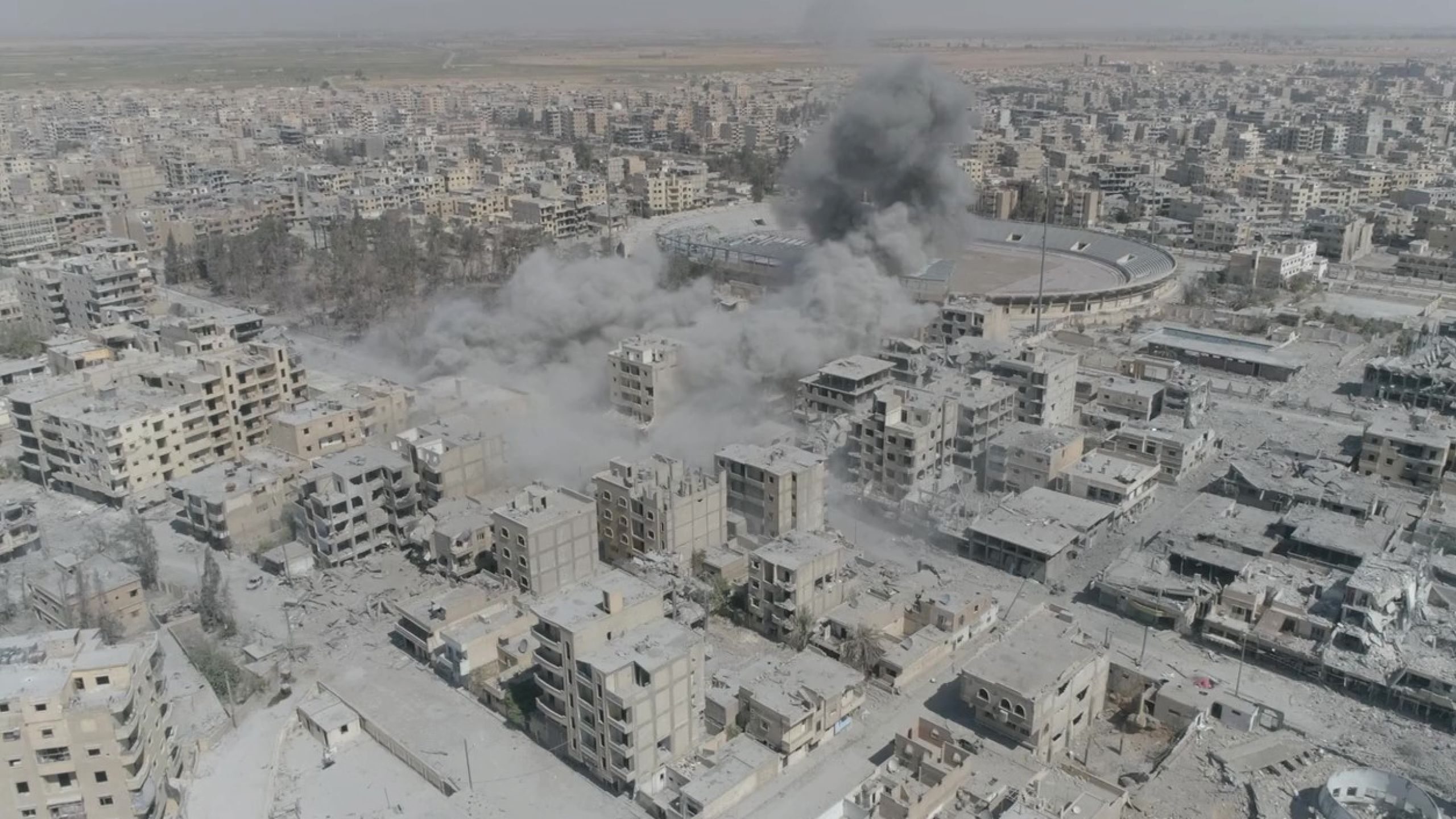NOWHERE TO RUN
TRAPPED IN RAQQA, SYRIA
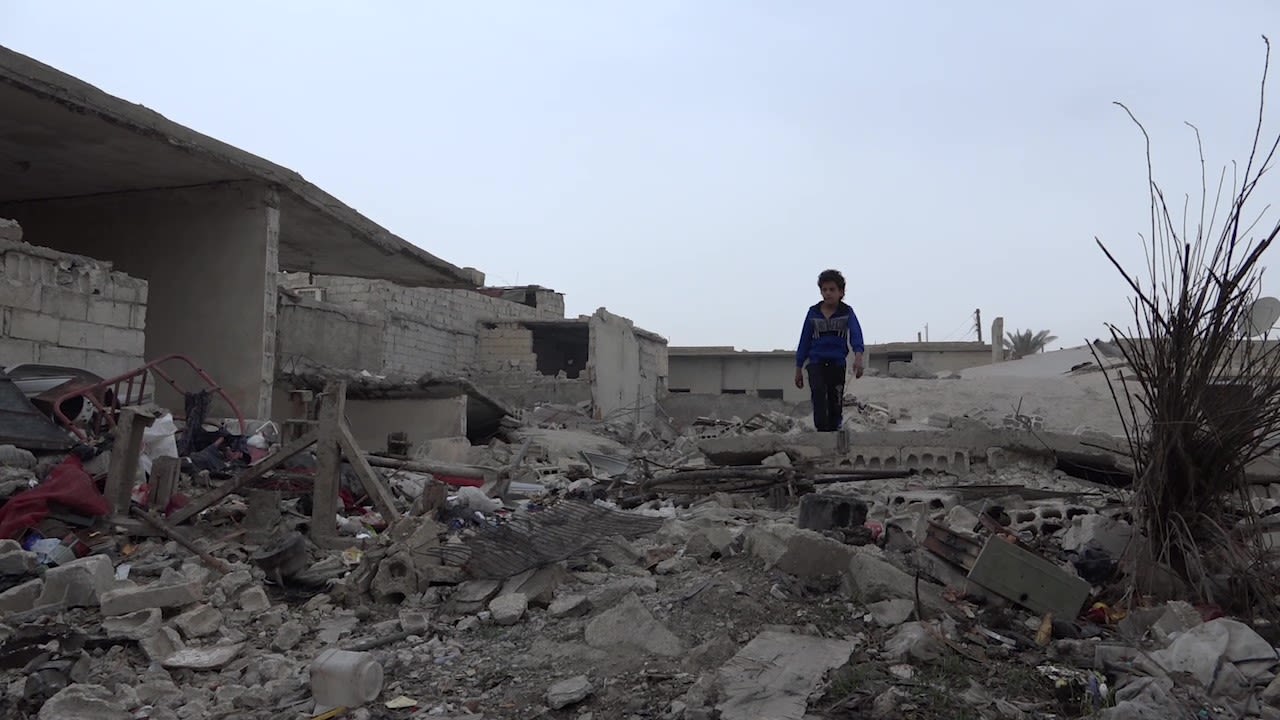
THE BATTLE FOR RAQQA
The four-month military operation to oust the armed group calling itself Islamic State (IS) from Raqqa, its self-declared capital in Syria, killed hundreds of civilians, injured many more and laid waste to the city between June and October 2017. Residents were trapped as fighting raged on Raqqa’s streets while a constant barrage of air bombardments and artillery strikes rocked the city day and night. With IS mines and snipers blocking escape routes out of the city, civilians desperately fled from place to place in search of safety. Some were killed in their homes; some in the very places where they had sought refuge, and others as they tried to flee.
Shortly before the start of the military campaign, US Defense Secretary James Mattis promised a “war of annihilation” against IS. The impact on civilians was devastating.
THE MILITARY OPERATION
Supporting Kurdish-led Syrian Defence Forces (SDF) on the ground, US forces and their Coalition partners launched tens of thousands of air and artillery strikes on Raqqa during the operation. In the words of Army Sergeant Major John Wayne Troxell: “In five months they [US Marines] fired 30,000 artillery rounds on ISIS targets… They fired more rounds in five months in Raqqa, Syria, than any other Marine or Army battalion, since the Vietnam War… Every minute of every hour we were putting some kind of fire on ISIS in Raqqa, whether it was mortars, artillery, rockets, Hellfires, armed drones, you name it”.
US forces launched more than 90% of the air bombardments and all of the artillery strikes. British and French forces carried out the remainder of the air strikes and other countries in the 70-member Coalition refueled planes and helped to identify targets.
US Lieutenant General Stephen Townsend claimed that the Coalition’s offensive on Raqqa had been “the most precise air campaign in the history”. The reality on the ground could not be more different.
Underlying satellite imagery shows Raqqa over the course of the battle. The darker colours indicate damage and destruction. © CNES 2018, Distribution AIRBUS DS
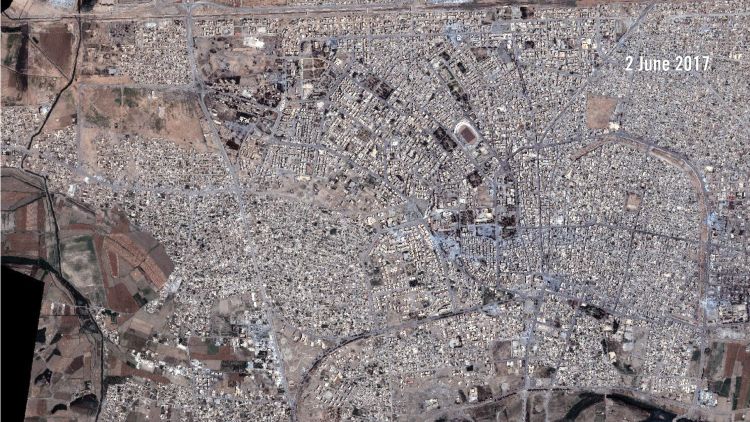
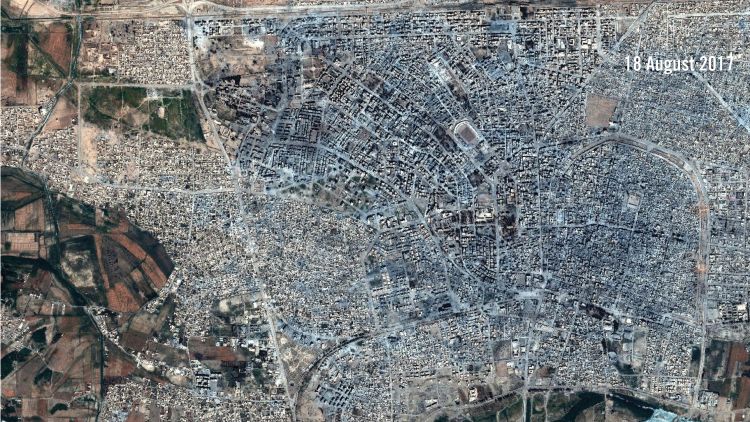
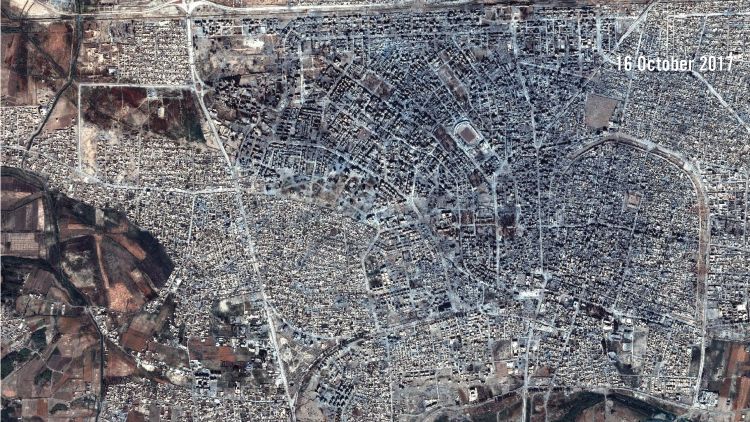
Amnesty International researchers travelled to Raqqa in February 2018 and spent two weeks visiting 42 locations of strikes and interviewing 112 witnesses and survivors. The organization analysed satellite imagery and reviewed other publicly available material.
They documented the impact on four families, whose experiences represent wider patterns of prima facie violations of international humanitarian law.
This is the story of the
BADRAN FAMILY
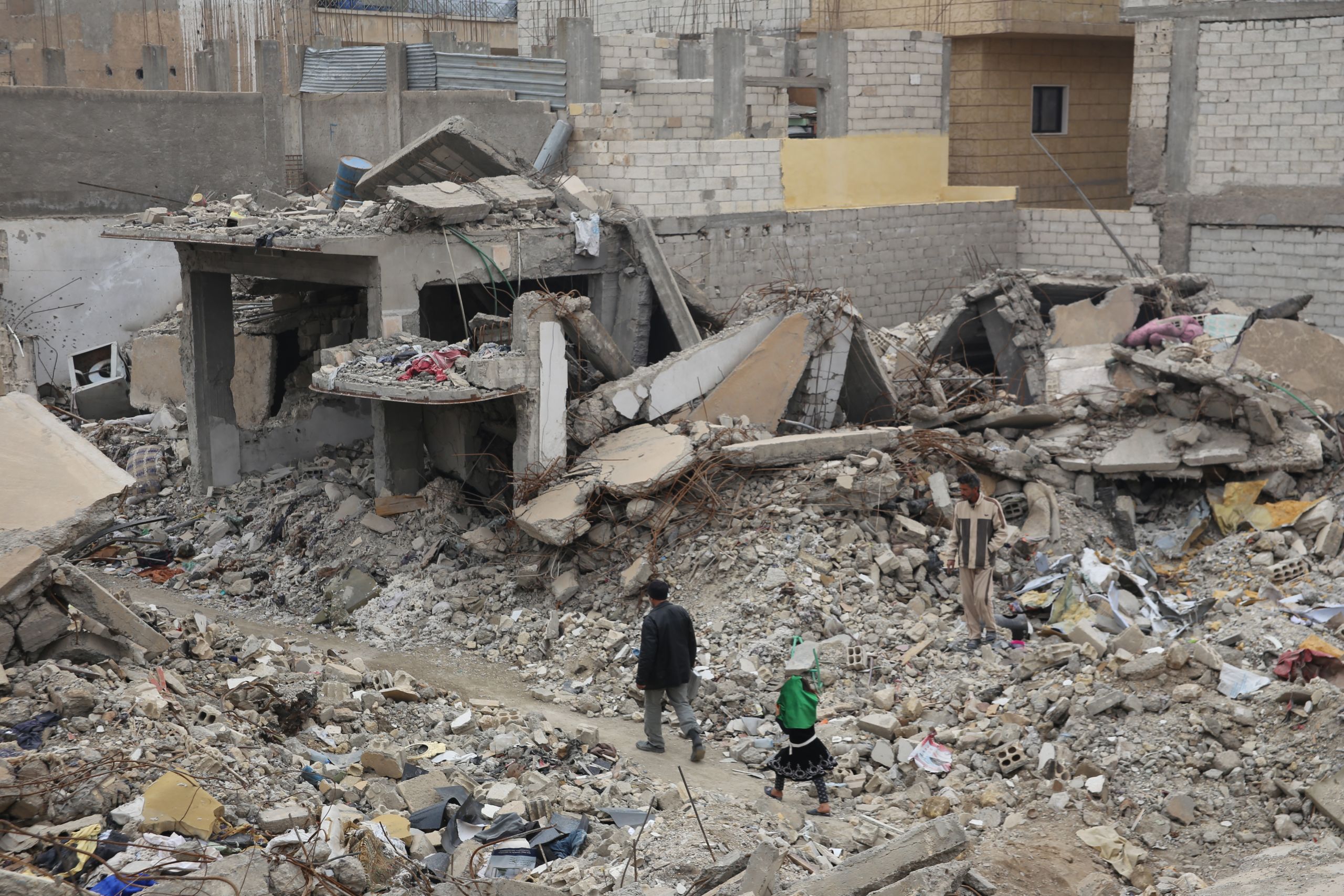
“We thought the forces who came to evict Daesh [IS] would know their business and would target Daesh and leave the civilians alone. We were naive. By the time we realized how dangerous it had become everywhere, it was too late; we were trapped ”. -Rasha Badran
Rasha and Abdulwahab Badran are in their mid and late 20s and were the proud parents of a one-year-old girl called Tulip, a resilient child who was born into war.
“She was an amazing baby; for weeks we lived on the run and under bombardment and as we moved around we couldn’t carry her toys; only essentials, but Tulip adjusted very quickly to the situation and did not make a fuss. She was a joy.”
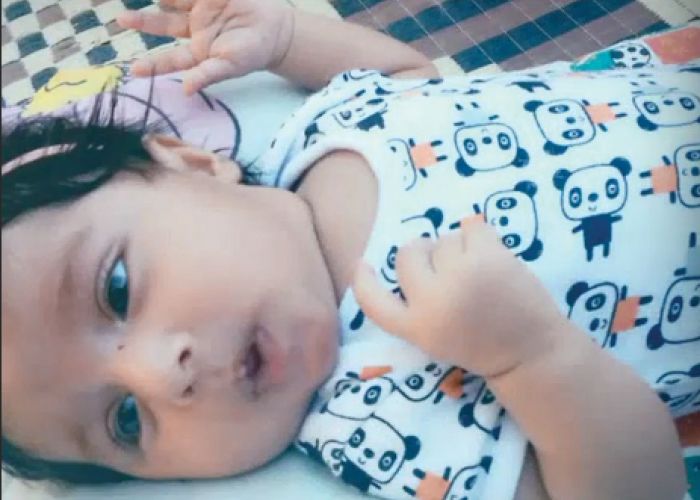
Rasha Badran's daughter, Tulip © Private
The young family lived in al-Fardous, a neighbourhood to the northwest of the city centre, not far from the stadium and the national hospital.
Here's Rasha's story, in her own words:
"We lived in a six-floor building but on the first floor so we thought we would be safe. But then two days before Eid (27th day of Ramadhan) at about 9 or 10 pm at least three artillery shells slammed into the street outside our building. We ran away and found shelter in a building near the Mara’i bakery. It was a four-floor building. We stayed on the first floor.
We spent Eid there and a couple of days later the building was hit and four of our relatives were injured. So, we fled again, but by then we had our injured relatives with us and we needed to find medical care for them and our movements were more restricted – as it was difficult for them to move. We went to Sharia al-Mansour and we took shelter in a two-storey house."
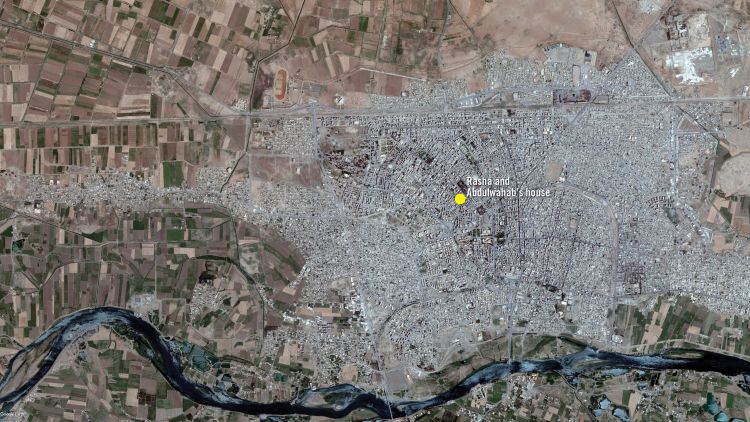
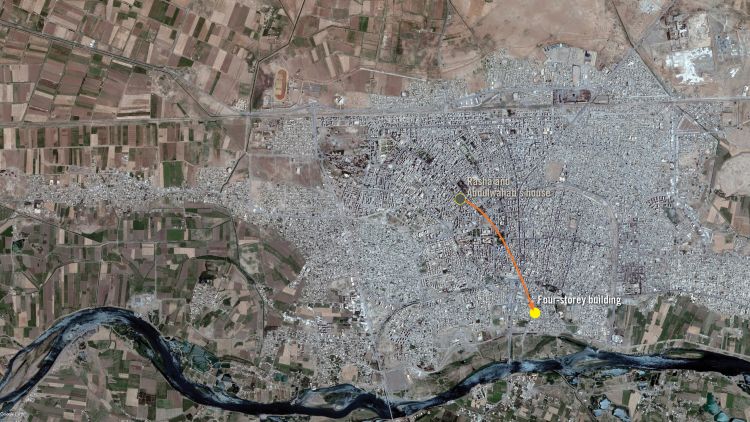
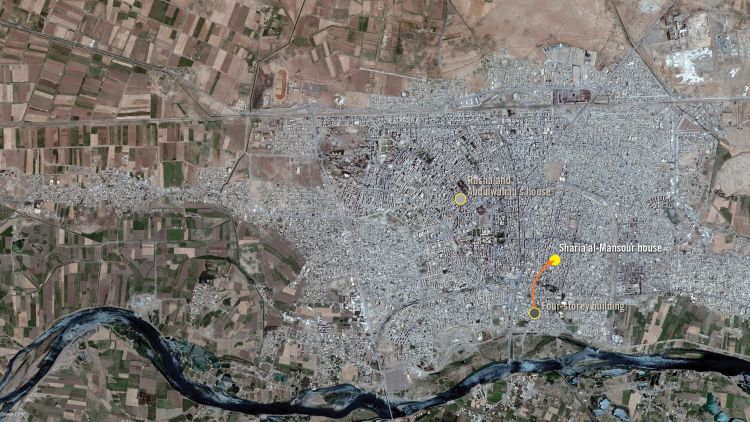
"But after four days Daesh forced us to leave. So we went to Nazlet al-Shehade."
DESPERATE ESCAPE
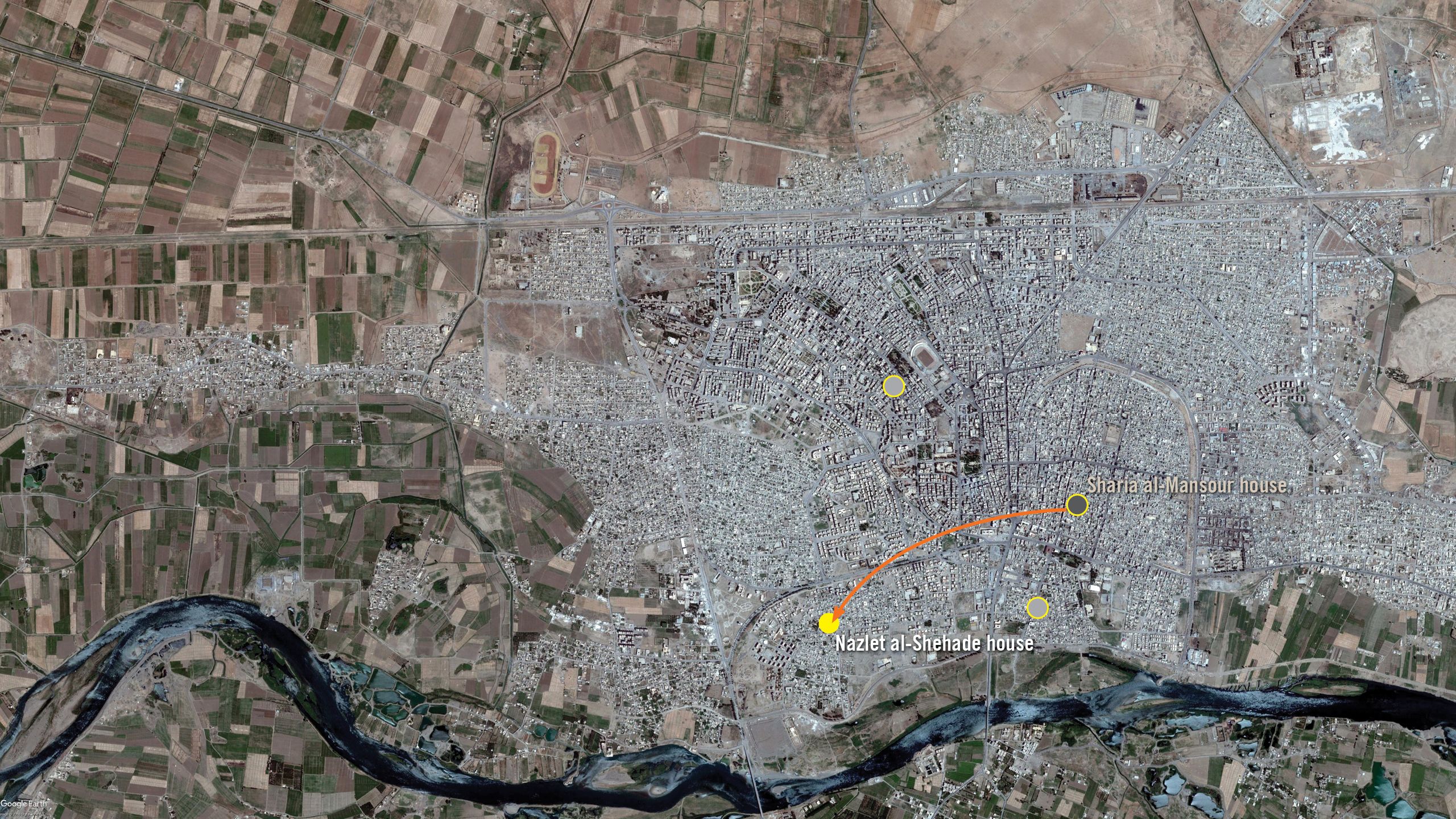
"On 18 July we fled from [Nazlet al-Shehade neighbourhood] because the fighting was getting closer. But as we were fleeing nine of our relatives were killed in two [aerial] bombardments – five of them in one of the houses just as they were about to leave and four others in the car."
“We went back to Fardous because we had our injured relatives to take care of and we needed to be near the hospital. We stayed there for one month, but not in our house, which by then had been destroyed; so we stayed in the house of a neighbour next door.
Then the hospital stopped working and we could not get bread and water anymore in the area. We heard there was a doctor in Harat al-Sakhani. So we went there. After a short time we tried to flee as a group, with many residents of the area; we were about 65 people; we tried to walk to where the SDF troops were. We got as far as Tal Abiad street,by the Andalous Bakery and there Daesh shot at us.
The doctor who had been treating our relatives, Dr Sofian al-Delli, was killed and his father was injured."
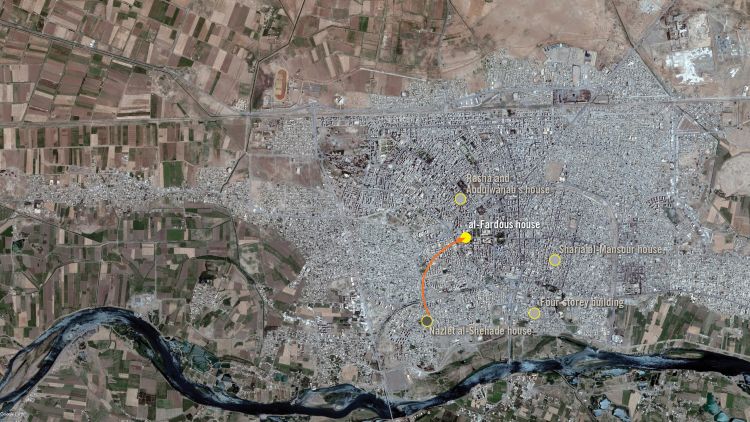
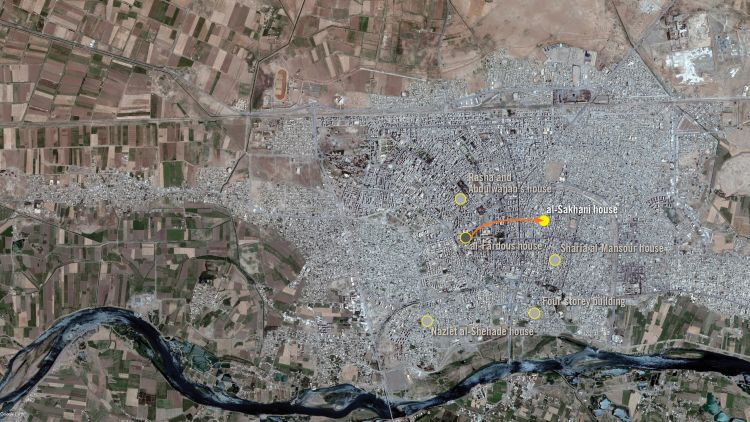
"So we went back to Harat al-Sakhani. We had no other options."
PLANES CIRCLING
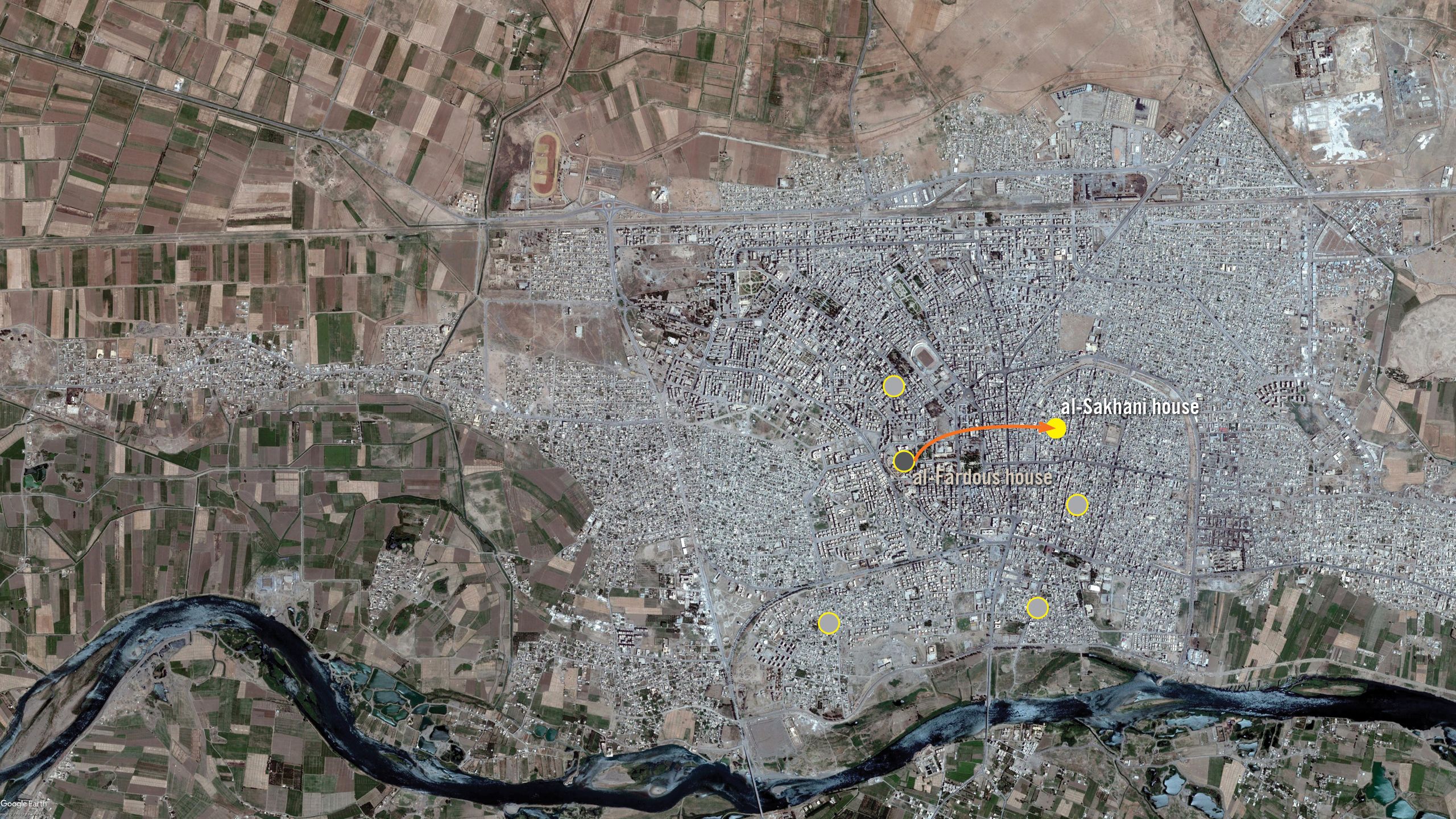
"Two days later we were bombed, both houses were we were staying got bombed. Almost everybody was killed. Only me and my husband and his brother and cousin survived. The strike happened at about 7pm on Sunday, 20 August.
I fainted and when I regained consciousness I heard my husband’s cousin, Mohamed, calling out. I could neither move nor speak. Then my husband and his brother found me. My husband was the most seriously injured – he had a head wound and blood was pouring from his ears. It was dark and we could not see anything. We called out but nobody else answered; nobody moved. It was completely silent except for the planes circling above.
We hid in the rubble until the morning because the planes were circling overhead.
In the morning we found Tulip’s body; our baby was dead; we buried her near there, by a tree.
Both houses were pulverized, nothing was left standing; there was only rubble."
"I don’t understand why they bombed us. Didn’t the surveillance planes see that we were civilian families?
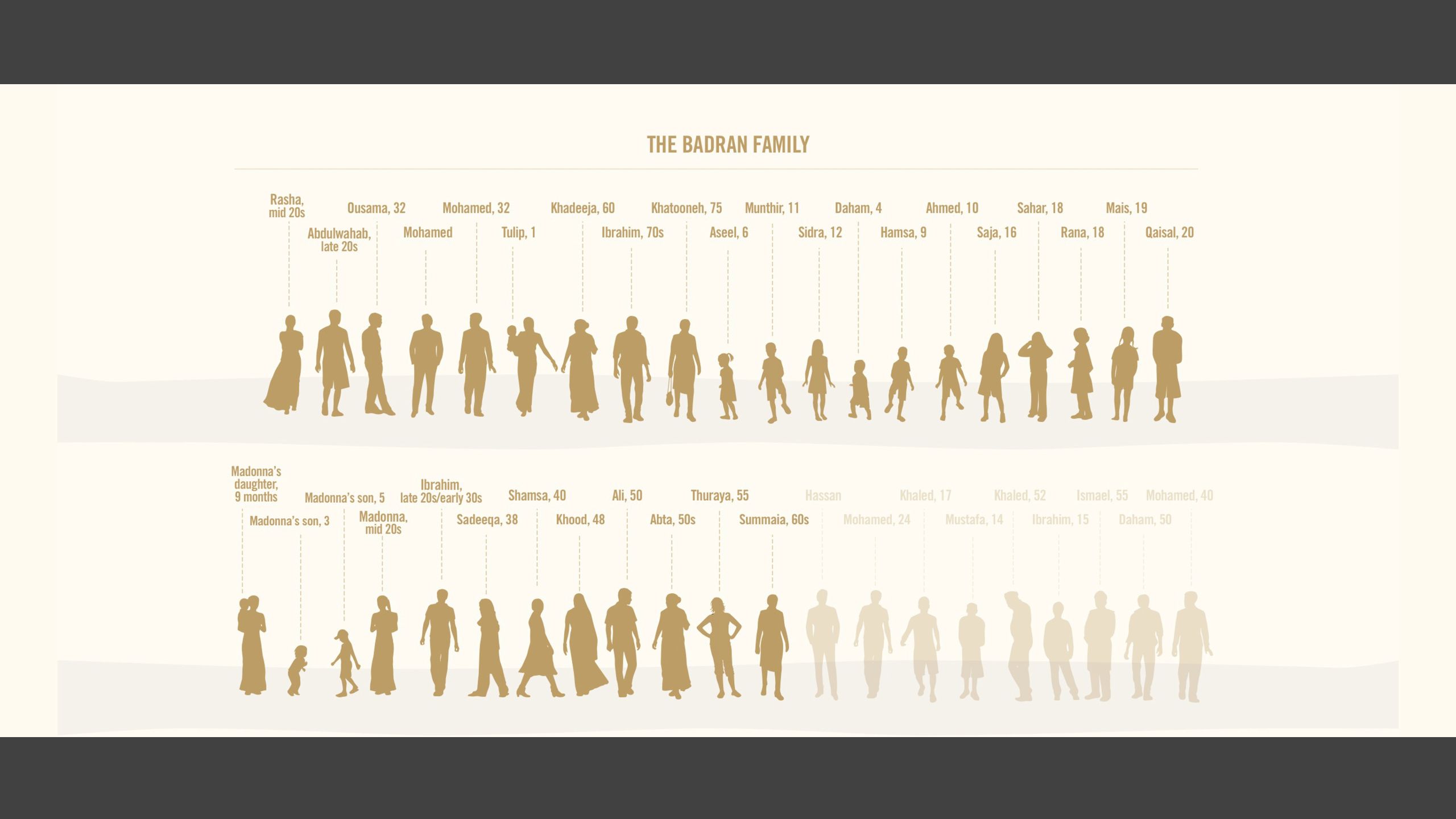
The young couple and their two relatives soon realised that they were the only survivors. After they buried their baby, they left, once again trying to find a safe place to shelter
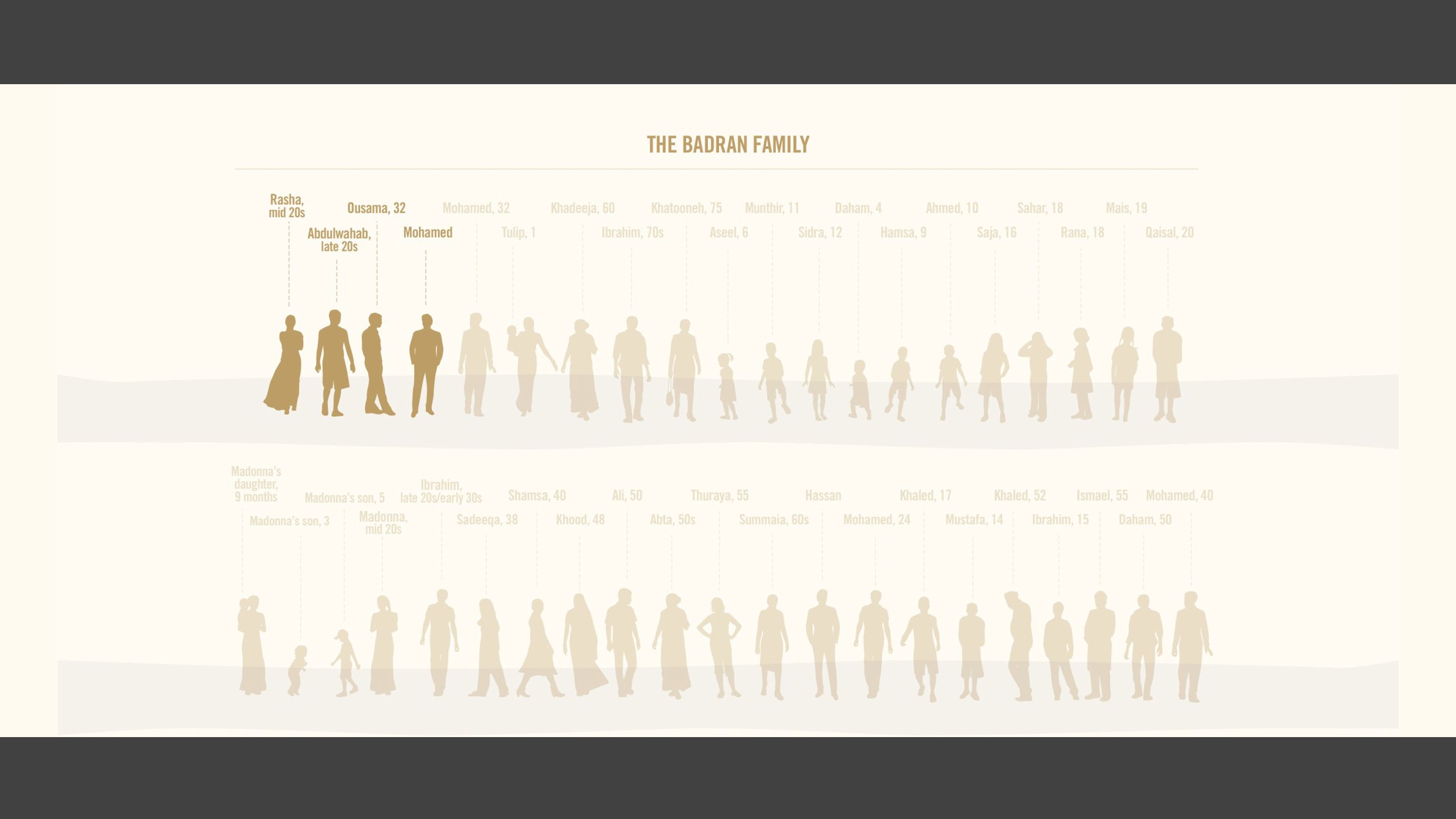
"[After the air strike on 20 August], we went back to Fardous, to the same house. We then decided to try to escape."
CALL TO PRAYER
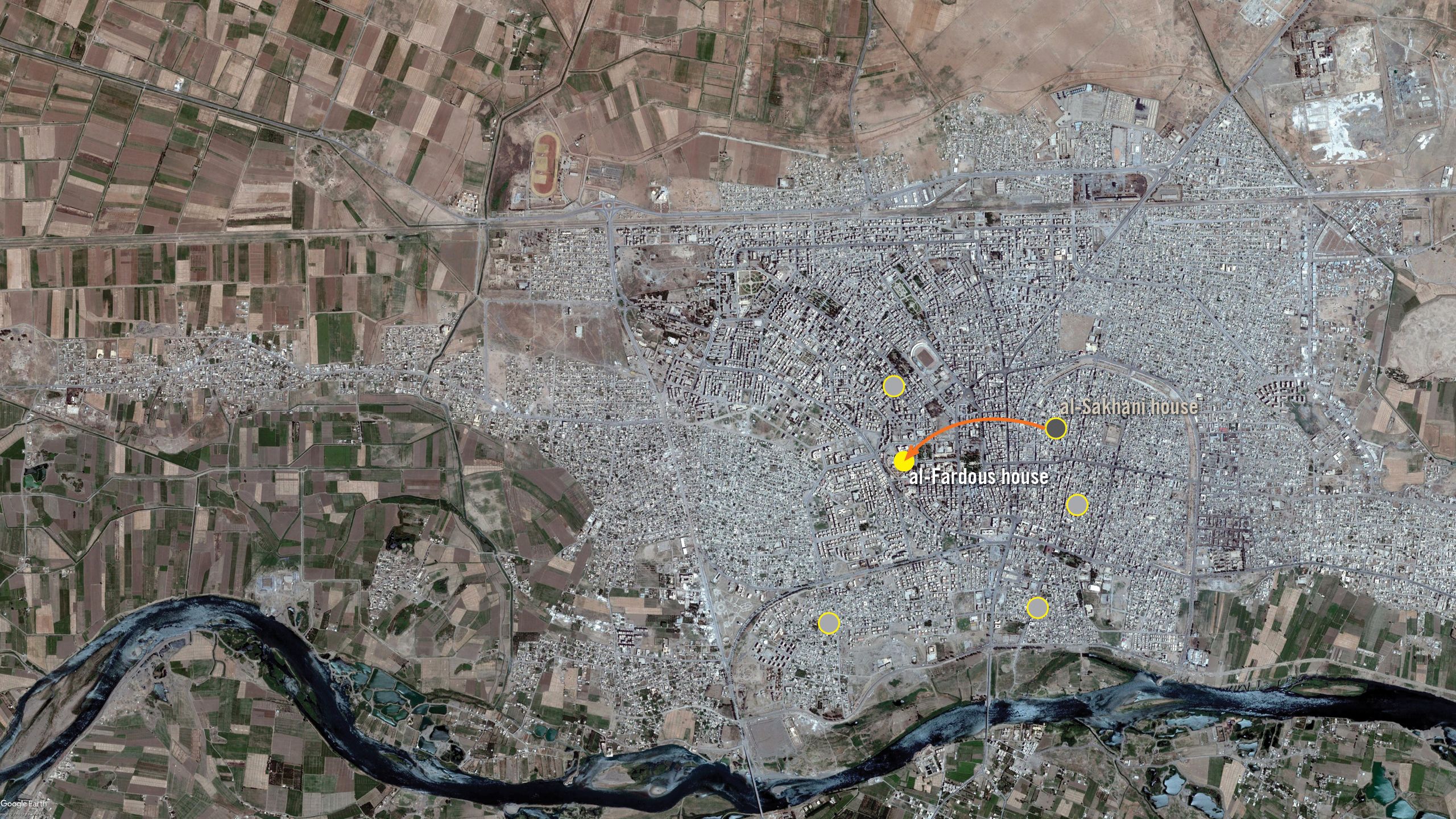
"Ousama and Mohamed, my husband’s brother and cousin, went to a neighbour to ask if they wanted to join us, so we would go as a group.
As they came out from the neighbour and were trying to cross the street, a drone struck the road, so they ran back into the neighbour’s house. And immediately then a plane bombed the house and destroyed it. Mohamed and Ousama and the owner of the house and two guests were all killed."
"We hid in the basement for three days, then Daesh discovered us and told us to leave. We walked towards the stadium and Harat al-Badu – me, my husband and five neighbours. We stayed in Harat al-Badu for two nights. Then we moved to a mosque for one night. There were about 60 or 65 people sheltering in the mosque.
Finally, on 17 September at about 4 am (we used the time of the morning prayer call to cover the noise of our steps) about 25 of us managed to cross the frontline to where the SDF were. The rest could not make it because Daesh snipers started to shoot and they were forced to go back. I don’t know how many of them made it out alive, if any were killed by Daesh or by the Coalition bombardments."
After weeks of hiding and fleeing, Rasha and her husband finally managed to reach safety. They had lost their baby and 38 other family members in the ordeal.
COALITION RESPONSE
The Coalition reported carrying out 30 strikes on 18 July and 54 strikes on 20 August "near Raqqa", but provides no details of the exact location it bombed and why. All of its strikes are described as having been “Against ISIS Terrorists”, but civilians, like the Badrans, were often the victims.
"We are the good guys and the innocent people on the battlefield know the difference". – US Defense Secretary James Mattis, during the height of the campaign on 30 June
See "War of Annihilation" for other in-depth Amnesty International investigations into the impact on three other families in Raqqa, described below.
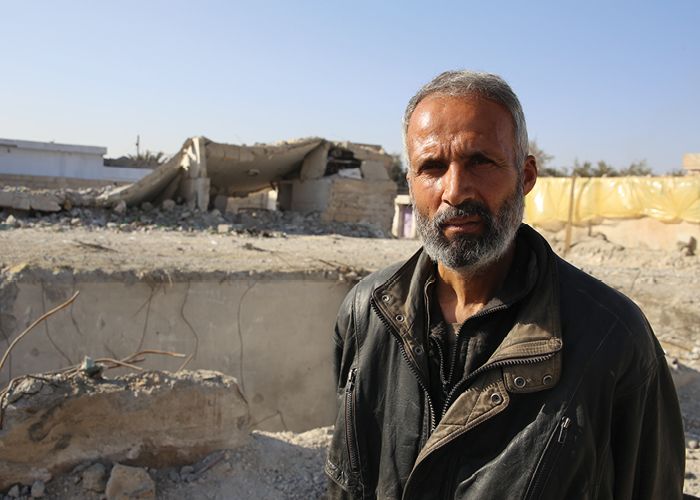
Mohammed Aswad in front of the air strike site that killed eight civilians © Amnesty International
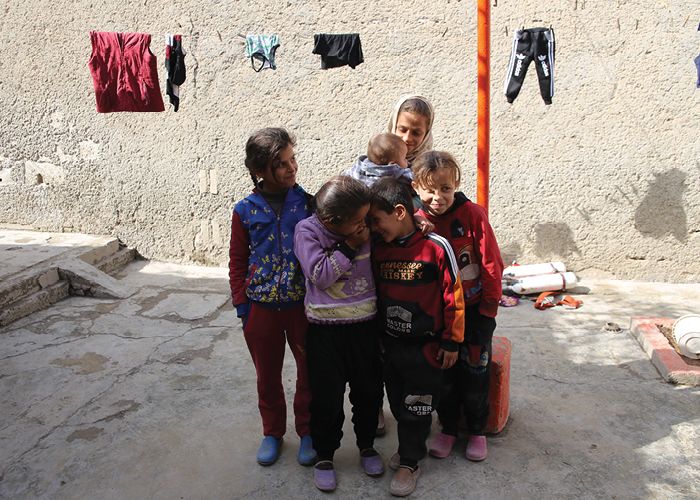
Munira's children that survived © Amnesty International
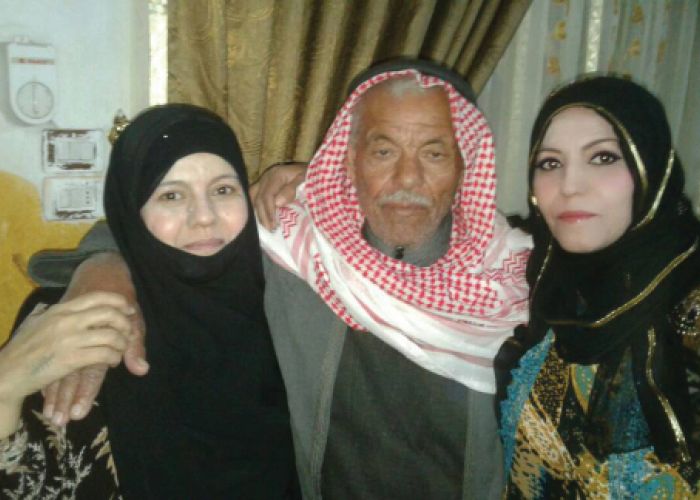
Fayad Mohammed Saif and his daughters Wafa and Fadda © Private
THE OTHER FAMILIES
ASWAD FAMILY
8 killed in an air strike
The Aswads were a family of traders who had worked all their lives to build a business and an apartment block in Raqqa.
When the military operation began, some family members stayed in Raqqa to protect their property, seeking shelter from the shelling in the basement of their building. On the evening of 28 June 2017, the building was destroyed by a Coalition air strike.
"The first thing that I saw when I went to the collapsed building was my brother – Mohammed Mahmoud Othman [50]. He was dead. Then I saw his son, 17-year-old Mahmoud, trapped under a pillar. We tried but we couldn’t drag the pillar off him. Then I saw his 12-year-old brother Anas, who was dead. I couldn’t see their sister Amal, 13, but I could hear her. My brother’s wife Fatima was in there as well. I didn’t see her but later we dug out her body and buried her."- Taha Mohammed Othman, Uncle
HASHISH FAMILY
18 killed in an air strike, IS mines and mortars
Munira Hashish and her family lived in Dara’iya, a low-income neighbourhood in western Raqqa. The family was not well off; Munira’s husband, Hussein Ibrahim Hashish, supported the family as best he could by selling vegetables out of a cart.
“Those who stayed died and those who tried to run away died. We couldn’t afford to pay the smugglers; we were trapped.” - Munira
After seven family members were killed by mines set by IS and later nine more were killed by a Coalition air strike, the family was finally able to escape "by walking over the blood of those who were blown up as they tried to flee ahead of us." - Munira
FAYAD FAMILY
18 relatives and neighbours killed in air strikes
In the early hours of 12 October 2017 a blitz of Coalition air strikes destroyed much of Harat al-Badu, the last neighbourhood under IS control. Fayad Mohammed, a man in his 80s known as Abu Saif, and 15 members of his family and neighbours were among those killed. Abu Saif had refused to leave the home where he had lived for 50 years when the Raqqa military campaign began.
"He insisted that he had lived here for 50 years and would not be evicted by these people who had taken control of the city and who he considered illiterate, ignorant and extremists." - Fayad relative
His daughters and other relatives stayed with him and, as Coalition air bombardments shook the neighbourhood, terrified neighbours sought shelter with the Fayad family.
Abu Saif’s house and that of Hussein Hamad Fares, across the small street, were among the last houses struck in the early hours of 12 October 2017.
CEASEFIRE DEAL
On 12 October 2017 the SDF and the Coalition agreed a ceasefire deal with IS granting IS fighters safe passage out of the city and impunity. A convoy of buses (arranged by the SDF) took IS fighters, with their families and their weapons, out Raqqa to areas still under IS control.
Residents of Raqqa ask why Coalition forces needed to destroy the city and kill so many civilians with bombardments supposedly targeting IS fighters – only to then allow IS fighters to leave the city with impunity.
